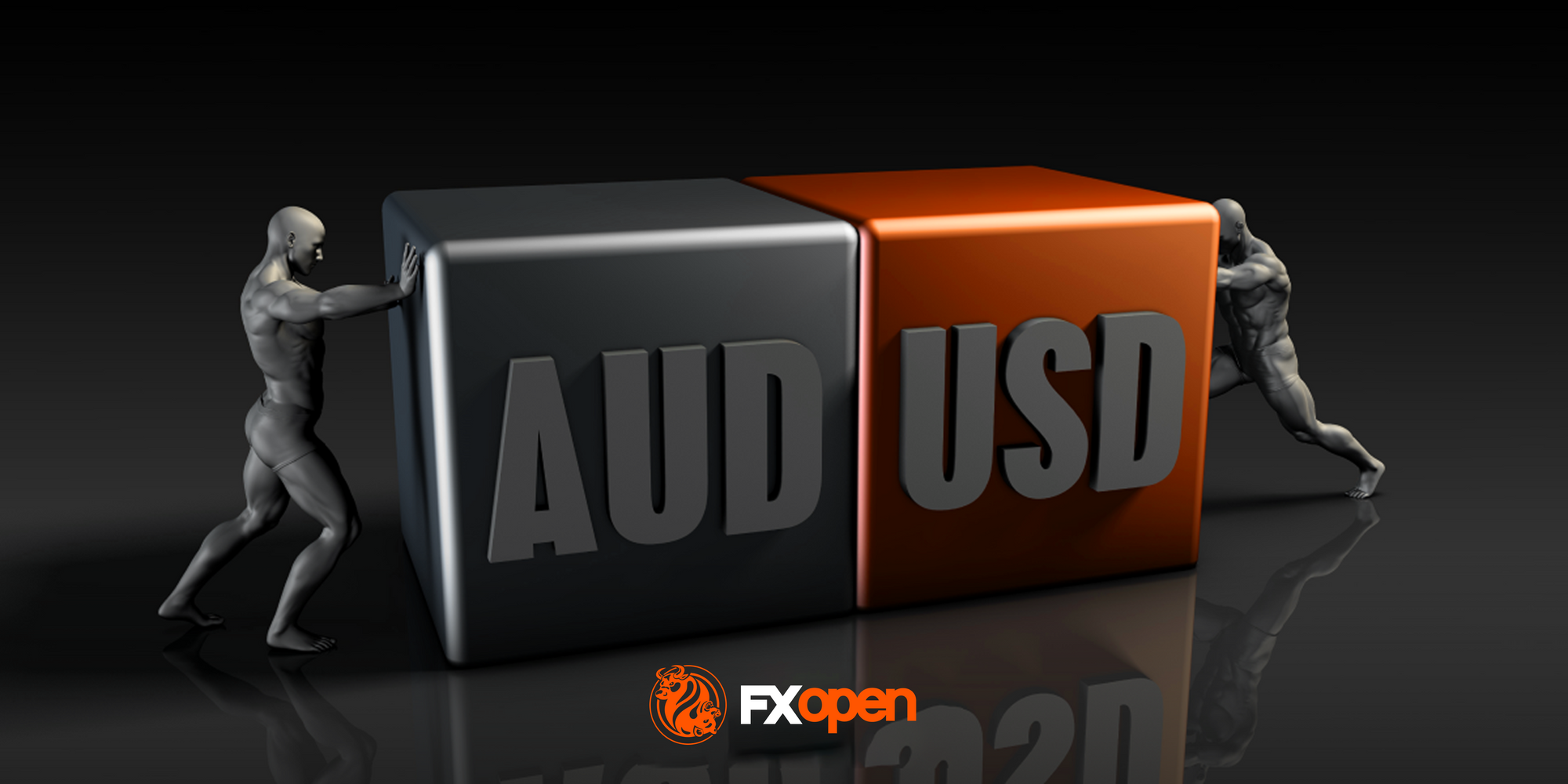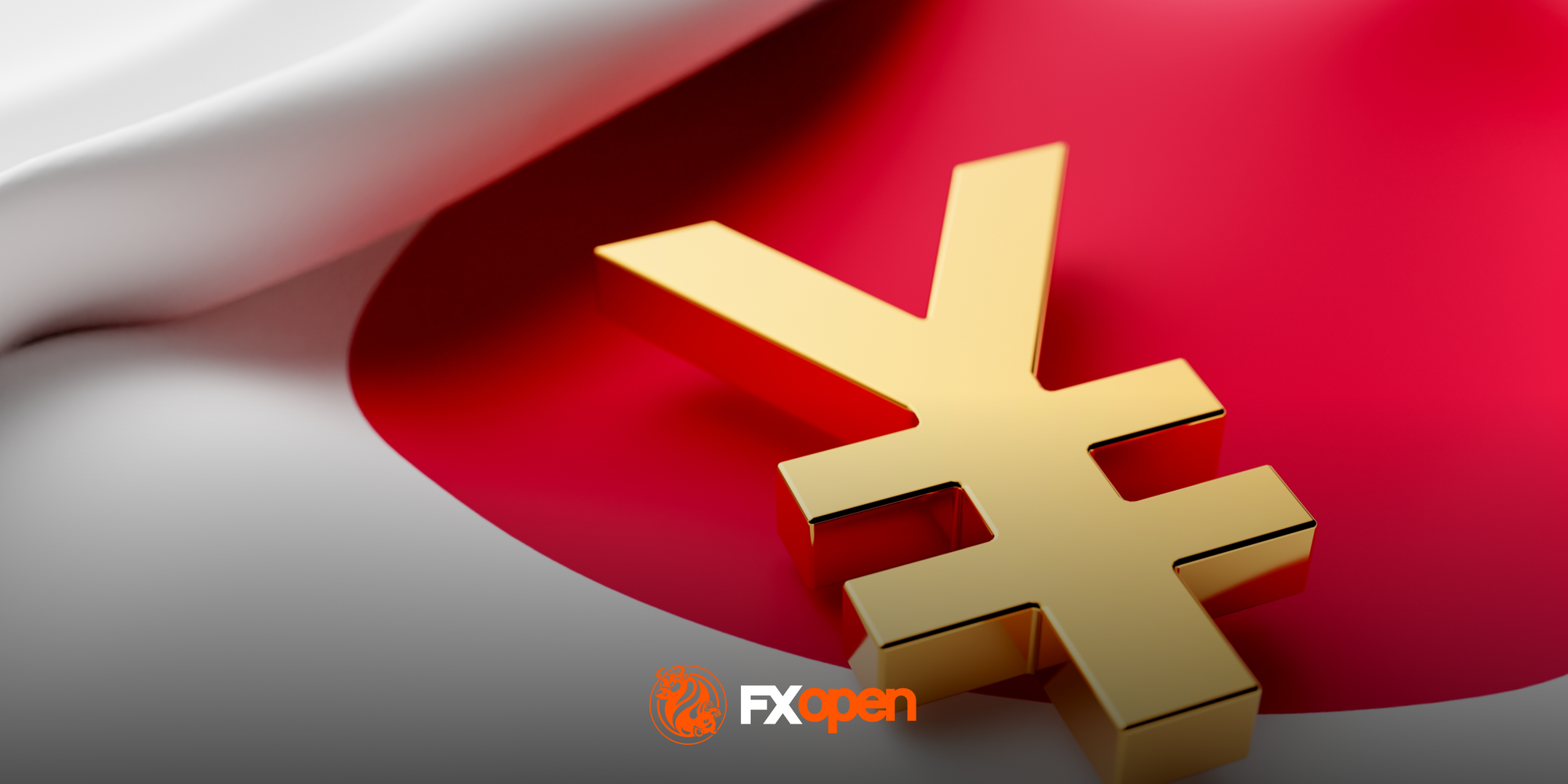FXOpen

A carry trade is a popular forex trading strategy that takes advantage of interest rate differentials between two currencies, aiming to earn returns from the interest gap. This article explores what a carry trade is, its formula, and how the strategy works, helping traders understand its potential advantages and risks.
Carry Trade: Definition
A carry trade is a popular forex strategy where traders take advantage of the difference in interest rates between two currencies. It involves borrowing money in a currency with a low borrowing cost—this is known as the "funding currency"—and then converting that borrowed amount into another offering higher interest, called the "investment currency." This is done to earn the interest rate differential between the two.
The Mechanics of a Forex Carry Trade
A carry position involves a few key components that work together to create potential opportunities in the forex market.
1. The Funding Currency
The first component is the currency that the trader borrows, the funding currency. Traders typically choose one with low interest costs because the amount to repay will be minimal. Common funding currencies include the Japanese yen (JPY) or the Swiss franc (CHF), as these often have low or even negative borrowing costs.
2. The Investment Currency
The second component is the investment currency, which is the one into which the borrowed funds are converted. This is chosen because it offers a higher interest yield, providing an opportunity to earn returns from the interest rate differential.
Popular investment currencies often include the Australian dollar (AUD) or the New Zealand dollar (NZD), as they tend to have higher borrowing costs. However, in recent years, emerging market currencies, like the Mexican peso (MXN), Brazilian real (BRL), and South African rand (ZAR), have also been favoured due to their high interest yields.
3. Interest Rate Differential
The core concept here is to capitalise on the interest rate differential between the funding and investment currency. If someone borrows in a currency with a 0.5% premium and invests in another offering a 4% yield, the differential (known as the "carry") is 3.5%. This differential represents the potential return, assuming there are no significant changes in the exchange rate.
4. Swaps and Rollovers
Swaps and rollovers are key factors. When you hold a position overnight (roll it over), the difference in interest rates between the two currencies is either credited or debited to your account. This is because when you trade a forex pair, you're effectively borrowing one currency to buy another. The swap rate compensates for the interest rate difference.
- Positive Swap Rate: If the interest rate of the currency you are buying is higher than that you are selling, you might receive a positive swap rate, meaning you earn interest.
- Negative Swap Rate: Conversely, if the interest rate of the currency you're selling is higher than the one you're buying, you'll pay interest, leading to a negative swap rate.
5. Leverage
Many traders use leverage to amplify their positions. Leverage allows them to borrow additional funds to expand the size of their investment. While this can potentially increase returns, it also magnifies risks. If the position moves against the trader, losses can quickly accumulate due to the leverage.
6. Market Fluctuations
The price of the pair is a crucial factor in the yield of the differential. While the differential offers the potential for returns, any adverse price movement can negate these gains. For instance, if the investment currency depreciates relative to the funding currency, the trader could face losses when converting back to the funding currency.
Conversely, if the investment currency appreciates relative to the funding currency, then they can potentially make an additional gain on top of their interest yield.
7. Transaction Fees and Spreads
Traders must consider transaction fees and spreads, which are the differences between the buying and selling prices of a forex pair. These costs can reduce the overall gains of the operation. Wider spreads, particularly in less liquid forex pairs, can increase the cost of entering and exiting positions.
In a carry position, these components interact continuously. A trader borrows in a low-interest-rate currency, converts the funds to a higher-yielding one, and aims to earn from the differential while carefully monitoring market movements, transaction costs, and swap rates. The overall approach is based on balancing the interest earned, fees, and potential pair’s price movements.
Carry Trade: Formula and Example
To calculate the potential return of a carry trade, traders use a basic formula:
- Potential Return = (Investment Amount * Interest Rate Differential) * Leverage
Let’s examine a carry trade example. Imagine someone borrows 10,000,000 Japanese yen (JPY) at a low interest rate of 0.5% and uses these funds to invest in Australian dollars (AUD), which has a higher borrowing cost of 4.5%. The differential is 4% (4.5% - 0.5%).
If the current exchange rate is 1 AUD = 80 JPY, converting 10,000,000 JPY results in 125,000 AUD (10,000,000 JPY / 80).
They then use the 125,000 AUD to earn 4.5% interest annually:
- 125,000 * 4.5% = 5,625 AUD
The cost of borrowing 10,000,000 JPY at 0.5% interest is:
- 10,000,000 * 0.5% = 50,000 JPY
Converted back to AUD at the original exchange price (1 AUD = 80 JPY), the interest cost is:
- 50,000 JPY / 80= 625 AUD
The net return is the interest earned minus the borrowing cost (for simplicity, we’ll exclude other transaction fees):
- 5,625 AUD − 625 AUD = 5,000 AUD
If the price changes, it can significantly impact the position’s outcome. For example, if the AUD appreciates against the JPY, moving from 80 to 85 JPY per AUD, the 125,000 AUD would now be worth 10,625,000 JPY (125,000 * 85). After repaying the 10,000,000 JPY loan, the trader receives additional returns.
Conversely, if the AUD depreciates to 75 JPY per AUD, the value of 125,000 AUD drops to 9,375,000 JPY (125,000 * 75). After repaying the 10,000,000 JPY loan, the trader faces a loss.
Types of Carry Trades: Positive and Negative
Trades with yield differential can be classified into two types: positive and negative, each defined by the differential between the funding and investment currencies.
Positive Carry Trade
A positive carry trade occurs when the borrowing rate on the investment currency is higher than that of the funding one. For example, if a trader borrows in Japanese yen (JPY) at 0.5% and invests in Australian dollars (AUD) at 4.5%, the differential is 4%. This differential means they earn more interest on the invested currency than they pay on the borrowed one, potentially resulting in a net gain, especially if market movements are favourable.
Negative Carry Trade
A negative carry trade happens when the yield on the funding currency is higher than that on the investment. In this case, the trader would lose money on the rate differential. For example, borrowing in US dollars at 2% to invest in euros at 1% would result in a negative carry of -1%. Traders might still pursue negative yield differential trades to hedge other positions or take advantage of expected market movements, but the strategy involves more risk.
How Can You Analyse Carry Trade Opportunities?
To analyse opportunities, traders focus on several key factors to determine whether a carry position could be effective. Traders can explore different forex pairs and their price movements in FXOpen’s free TickTrader trading platform.
1. Differentials
The primary factor here is the interest rate differential between the two currencies. Traders look for forex pairs where the investment currency offers a significantly higher interest return than the funding currency. This differential provides the potential returns from holding the position over time.
2. Economic Indicators
Traders monitor economic indicators such as inflation rates, GDP growth, and employment figures, as these can influence central banks' decisions on interest rates. A strong economy may lead to higher borrowing costs, making a pair more attractive for a yield differential position. Conversely, weak economic data could result in rate cuts, reducing the appeal of a currency.
3. Central Bank Policies
Understanding central bank policies is crucial. Traders analyse statements from central banks, like the Federal Reserve or the Bank of Japan, to gauge future rate changes. If a central bank hints at raising borrowing costs, it could present an opportunity for a positive carry transaction.
4. Market Sentiment and Risk Appetite
This type of transaction often performs well in low-volatility environments. Traders assess market sentiment and risk appetite by analysing geopolitical events, market trends, and investor behaviour.
Risks of a Carry Trade
While carry trading can offer potential returns from borrowing cost differentials, they also come with significant risks that traders must consider.
- Exchange Risk: If the investment currency depreciates against the funding one, it can wipe out the returns from the differential and result in losses.
- Interest Rate Risk: Changes in the cost of borrowing by central banks can alter the differential, reducing potential returns or even creating a negative carry situation.
- Leverage Risk: Many traders use leverage to amplify returns, but this also magnifies potential losses. A small adverse movement in pairs can push the trader out of the market.
- Liquidity Risk: During periods of low market liquidity, exiting a position may become difficult or more costly, increasing the risk of loss.
A Key Risk: Carry Trade Unwinding
Unwinding happens when traders begin to exit their positions en masse, often due to changes in market conditions, such as increased volatility or a shift in risk sentiment. This essentially means exiting the investment and repurchasing the original currency.
Unwinding can trigger rapid and significant price movements, particularly if many traders are involved, and lead to a much lower return if the exit is timed incorrectly. For example, if global markets face uncertainty or economic data points to a weakening economy, investors may seek so-called safer assets, leading to a swift exit from carry positions and a steep decline in the investment currency.
The Bottom Line
This type of strategy offers a way to take advantage of interest rate differentials between currencies, but it comes with its own set of risks. Understanding the mechanics and analysing opportunities is critical. Ready to explore yield differential trades in the forex market? Open an FXOpen account today to access advanced tools, low-cost trading, and more than 600 markets. Good luck!
FAQ
What Is a Carry Trade?
A carry trade in forex meaning refers to a strategy where traders borrow in a low-interest currency (the "funding currency") and invest in a higher-interest one (the "investment currency") to earn returns from the differential.
What Is the Carry Trade Strategy?
The carry trade strategy consists of borrowing funds in a currency with a low interest rate and using those funds to invest in a currency that offers a higher interest rate. Traders then invest the borrowed funds in the higher-yielding one to earn returns from the borrowing cost differential. The strategy typically relies on both relatively stable forex prices and the interest differential remaining favourable.
How Does the Japanese Carry Trade Work?
The Japanese currency carry trade typically involves borrowing the Japanese yen (JPY) at a low interest rate and converting it into another with a higher yield, like the Australian dollar (AUD). The aim is to take advantage of the gap in borrowing costs.
What Is an Example of a Yen Carry Trade?
An example of a yen carry position is borrowing 10,000,000 JPY at 0.10% interest and converting it to AUD, which earns 4.35%. The trader takes advantage of the 4.25% differential, assuming favourable market conditions.
This article represents the opinion of the Companies operating under the FXOpen brand only. It is not to be construed as an offer, solicitation, or recommendation with respect to products and services provided by the Companies operating under the FXOpen brand, nor is it to be considered financial advice.
Stay ahead of the market!
Subscribe now to our mailing list and receive the latest market news and insights delivered directly to your inbox.








